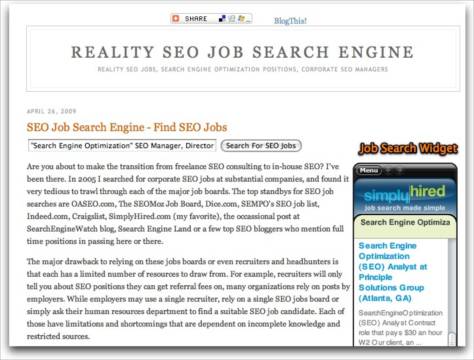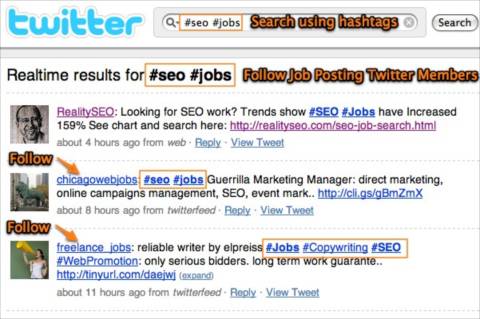How to Find a Job Online Using Google & Twitter Search & LinkedIn
The major drawback to relying on broad jobs boards or even recruiters and headhunters is that each has a limited number of resources to draw from. For example, recruiters will only tell you about positions they can get referral fees on, many organizations rely on posts by employers.
While employers may use a single recruiter, rely on a single jobs board or simply ask their human resources department to find a suitable job candidate. Each of those have limitations and shortcomings that are dependent on incomplete knowledge and restricted sources.

- Image via CrunchBase
In 2005 I created a Google Custom Search Engine (anyone can do this) which searches job sites, specialty job boards and blogs focused on only my industry! It’s incredibly effective and works better than going to any single one of the sources it searches.

SEO Job Search Engine
Another great technique is to use jobs aggregation sites like SimplyHired, where they present jobs from across the web by presenting the results of dozens of major jobs boards, CraigsList, specialty jobs sites, job partnerships and some of their own listings. They also offer incredible tools like salary charts, job search widgets, job market demographics and local jobs searches limited by zip code or city names. Here’s a profile for jobs in Springfield, Illinois. They list U.S. Census data, local job market stats, local map, listings of local companies and local news links. Very useful stuff when you are job hunting in a specific market!
Then I went to my Twitter account and “followed” job notification Tweeters for my industry by searching using hashtags which are simply words preceeded by a pound sign #. If you want to do the same, go to Twitter Search and type #tech #jobs(replace your industry in that first hashtag). Here’s a Twitter search for #accounting #jobs which returns the most recent tweets including those hashtags! This is more effective than NOT using hashtags due to the signal to noise ratio. Those who used hashtags understand how they improve visibility and WANT you to find their tweets this way.

SEO Job Search on Twitter
When you click begin following those posting jobs, click through to the link they’ve provided on their Twitter Profile to search their site for more jobs.

Plum Jobs can be found using Twitter Profiles of recruiters
Finally, if you are not a member of LinkedIn, go join immediately and start finding connections among current co-workers, past jobs, and your friends who already have profiles. This connects you to literally hundreds of people that can help you find work. LinkedIn is probably the best online resume you could have. You list your job history, educational background and get recommendations from past and current employers and co-workers.

LinkedIn Features Online Resumes & Professional Networking Connections
LinkedIn has a jobs board, but the ultimate source is those you know and all of their connections. Companies also have profiles on LinkedIn to help those looking for work to know more about the business. If you are already a member, complete your profile, ask for recommendations and start networking, before you need that next job!
Between the Google Custom job search engine, SimplyHired, LinkedIn and Twitter searches, I turned up several leads and submitted online applications. I found two strong leads this way, which lead to interviews and eventually jobs. These techniques have been incredibly successful for me twice in my recent career.
Below is the Google Custom Search engine I created to search just my industry and job boards specific to one single type of work.
Related articles by Zemanta
- The Search: Getting Back in Shape for the Job Chase (nytimes.com)
- The hidden job market (money.cnn.com)

![Reblog this post [with Zemanta]](https://img.zemanta.com/reblog_e.png?x-id=fe575f21-98b2-43f1-a1a3-5101de14ceaf)

Comments on this entry are closed.